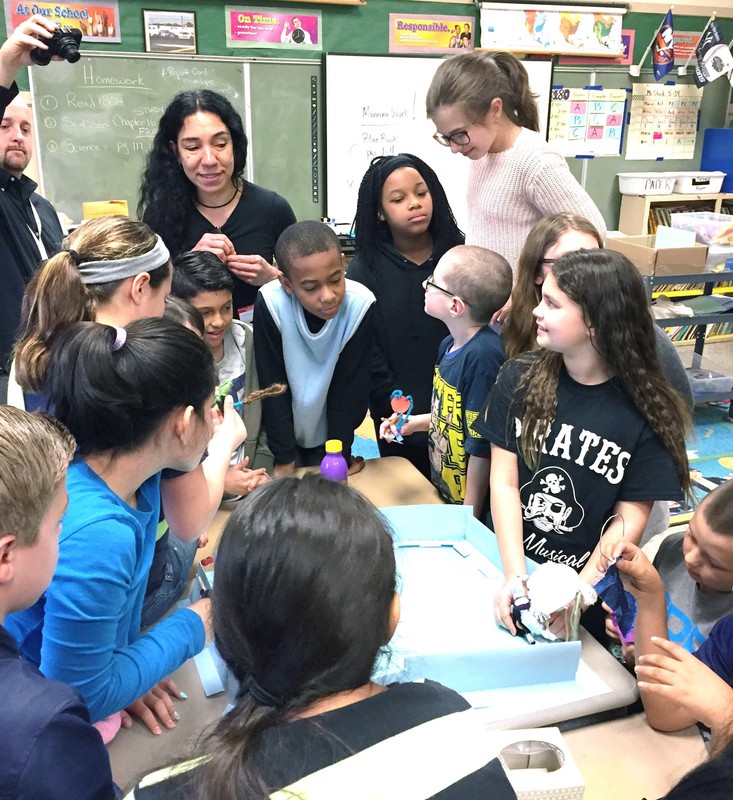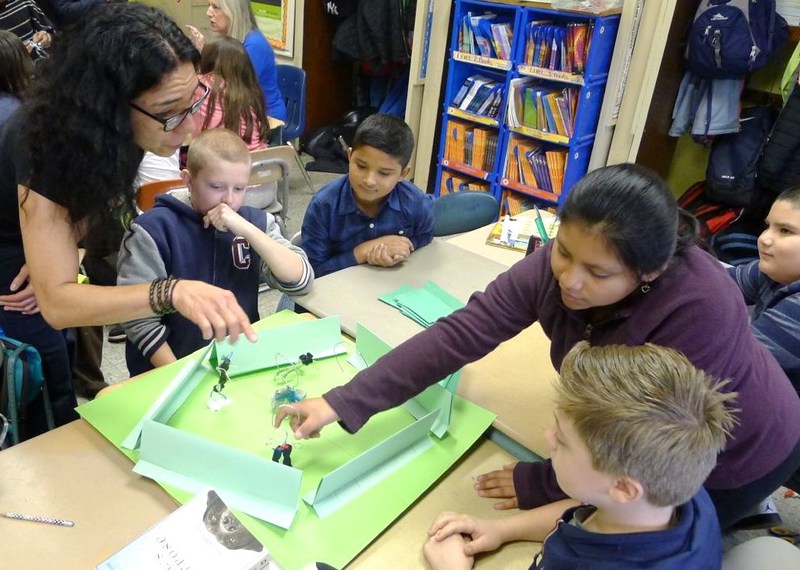
Every living thing is made up of cells, but not all cells are alike. Patchogue-Medford Grade 5 teachers recently collaborated with visual artist Lucienne Pereira to help students understand the differences and similarities between animal and plant cells. Ms. Pereira used the wire sculptures created for “The Circus” by Alexander Calder’s as inspiration for teaching cell elements to the fifth graders, a diverse population that included English as a New Language learners.
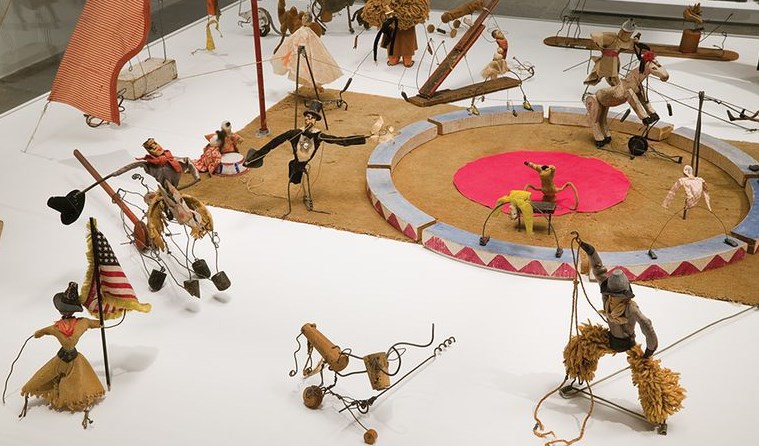
After sharing images of Calder’s wire sculpture, Ms. Pereira guided the students in the creation of their own wire sculptures. The students designed a wire figure representing one element of an animal cell (ie, Nucleus, Vesicles) or plant cell (ie, Vacuole, Chloroplast). The students worked in small groups with a variety of materials. “They engaged in collaborative problem solving to determine the best way to interpret each cell part visually and artistically,” notes Ms. Pereira.
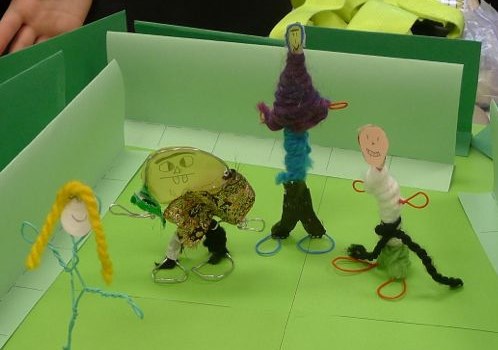
Next, the teaching artist challenged the students to create a story about what happens inside of a cell using their wire figures to represent the cell elements. The students created props, such as signs and cars for transportation within the cell membrane. For the culminating activity, Ms. Pereira provided platforms for staging the students’ plays. The platforms represented the cell’s walls and/or membrane and were different colors and shapes: green and triangular to represent the plant cell wall and membrane or blue and circular to represent the animal cell membrane.
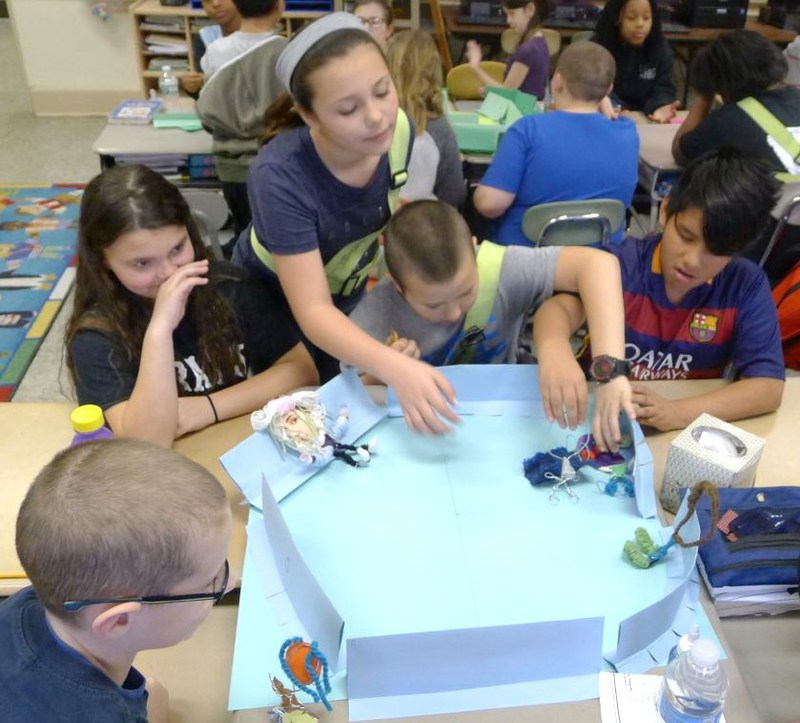
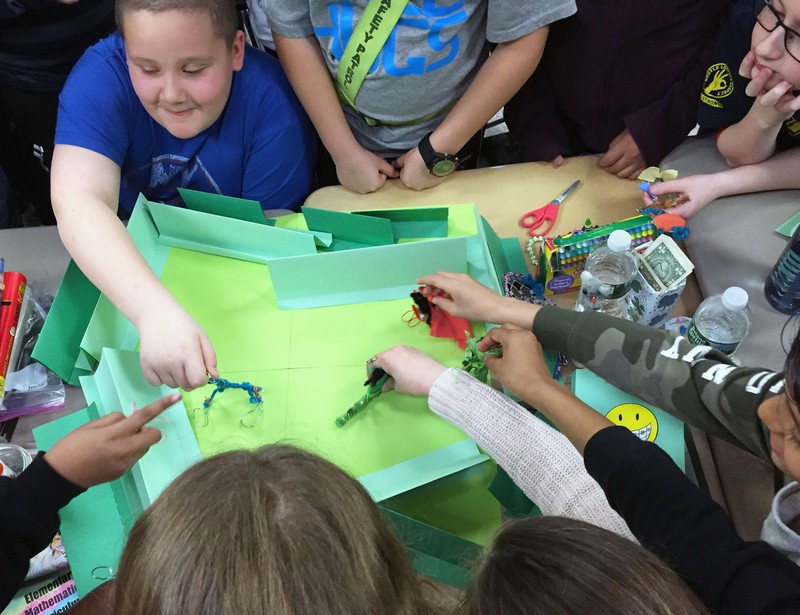
The students performed their cell stories for their classmates, re-enacting the function of each cell part within the cell membrane. As each group performed, their classmates surrounded them, made comments and asked questions. The exchange reinforced the project’s concepts. “The cell play enabled the students to explore the similarities and difference between plant and animal cells,” explains a Grade 5 teacher. “They had to identify, analyze and interpret the cell elements and its job or function.”
For example, when a wire character/cell part knocked at the membrane’s gate, the gate keeper, who was responsible for what entered and exited the cell, had to ask itself: “Is this character/substance a desirable thing or not?” Once inside the cell membrane, the “thing” was transported by car/vesicle to the nucleus for directions.
“The children had fun, discussing the different functions, orders, activities of the cell parts within the cell,” says Ms. Pereira. “They created voices for their cell part/characters and other sound effects.” Afterwards, the teaching artist congratulated students on a job well done.
